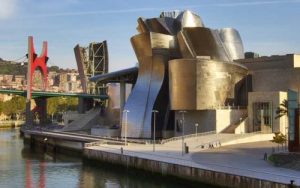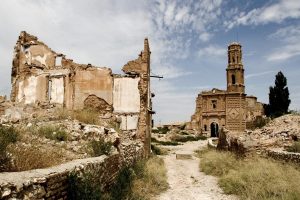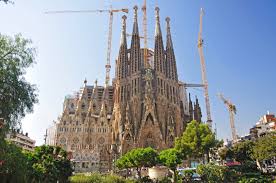Unlike most of our voyages, this month I was accompanying my wife Susan on a trip to her conference. She registered in the 16 European Symposium on Suicide Prevention that took place this month in Oviedo, Spain. We took the opportunity to rent a car and bought a GPS with European maps (thank god!) and travelled through most of northern Spain. We headed up to the Basque country with stops in Pamplona (fortunately no running bulls this month) and then to the beautiful, but tourist plugged town of San Sebastian. We then motored through Basque countries, many mountain passes and tunnels (a bit white knuckled at 120 Km/H) to visit Guernica (site of first mass civilian bombing and immortalized by Pablo Picasso) and then to Bilbao.
 Of course, like all good tourists we couldn’t miss the Guggenheim Museum and it did not disappoint.
Of course, like all good tourists we couldn’t miss the Guggenheim Museum and it did not disappoint.
We then headed west to Oviedo, capital of Asturias. I didn’t attend much of Susan’s conference, except for a couple of sessions in which Danish and Belgian online Suicide prevention systems were presented. I was impressed with the scientific rigour with which these interventions were tested – though trying to randomly assign suicidal participants to interventions presents a variety of ethical challenges.
We also travelled by car, (I know it was cheating) along some of the Camino de Santiago routes, trying to assess if we have the interest and the legs for such adventures. I had not realized the number of different Camino routes nor the number of pilgrims on them. I learned that in one day they ‘processed” over 600 pilgrims who were finishing the pilgrimage in Santiago.
We then headed south to Madrid with a stop in Leon. I was fortunate to be invited to give a talk at Universidad Nacional de Educación a Distancia, which is the largest University in Spain with all courses delivered at a distance. Like Athabasca University, this University has had considerable challenges moving from its roots as a correspondence university to interactive online delivery. We visited many of the tourist spots and of course the famous museums in Madrid – though the huge line ups at the Prada scared us away.
Next we headed back to Barcelona, but we ventured into the hinterland for a brief visit to Belchite
 This town was left in ruins after a horrendous battle during the Spanish Civil War and a new town was built beside the ruins. These ruins now stand as a monument to the destruction of war, though they seem far off the tourist trail and we were the only visitors that day. It is strange that, unlike the American Civil war which is celebrated by numerous monuments and re-enactments, Spaniards seem to want to forget this sad time in their history. Perhaps because the “good guys” lost??
This town was left in ruins after a horrendous battle during the Spanish Civil War and a new town was built beside the ruins. These ruins now stand as a monument to the destruction of war, though they seem far off the tourist trail and we were the only visitors that day. It is strange that, unlike the American Civil war which is celebrated by numerous monuments and re-enactments, Spaniards seem to want to forget this sad time in their history. Perhaps because the “good guys” lost??
We then headed to Barcelona. As always, Barcelona with the inspiring architecture was a treat. It was interesting to see the progress on the Sagrada Familia,  Gaudi’s most famous design. It looks to be on track for completion marking the 100th anniversary of Gaudi’s death in 2026. The new stain glass (abstracts and NOT crucifixion scenes) in the windows (though still far from complete) adds blue and green hues to the whole interior – in keeping with the natural and forest like feeling. I am sure that this is the most spectacular building that I have seen anywhere and I hope to live to see its completion!
Gaudi’s most famous design. It looks to be on track for completion marking the 100th anniversary of Gaudi’s death in 2026. The new stain glass (abstracts and NOT crucifixion scenes) in the windows (though still far from complete) adds blue and green hues to the whole interior – in keeping with the natural and forest like feeling. I am sure that this is the most spectacular building that I have seen anywhere and I hope to live to see its completion!
I then spent 2 days and 2 web-cast lectures with my old friends at Open University of Catalonia. The first talk was a repeat plus additions from a chapter I recently did on Theories for Online Learning and Research.
For the second talk, I overviewed the chapter that Jon Dron and I (mostly Jon) did on the Future of E-Learning.
After a great weekend with friends in Barcelona – we even made it to the beach and to watch my first game of handball, we headed back. Susan home to Edmonton and me to Helsinki, where I am the “opponent” in a PhD defence here on Friday.